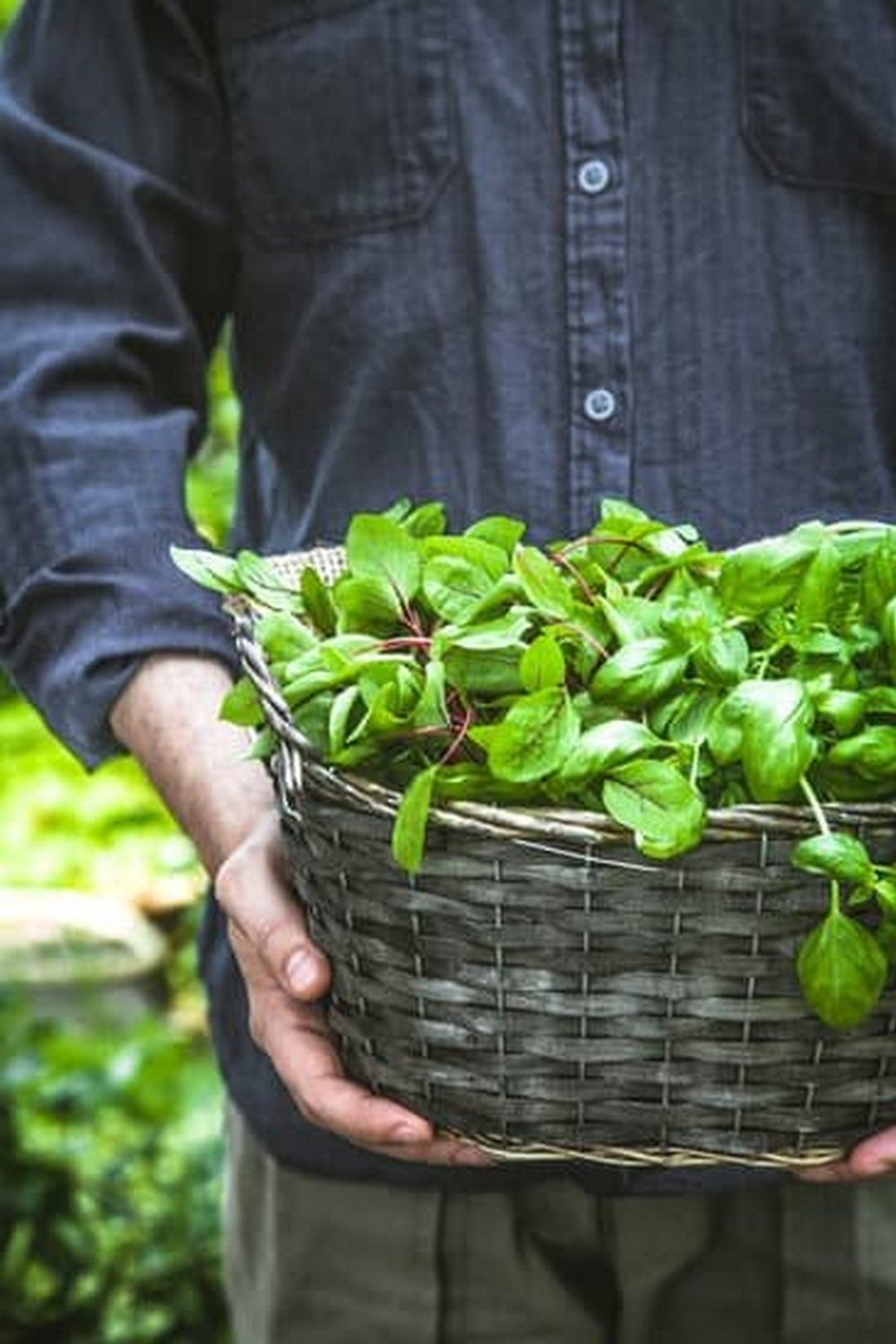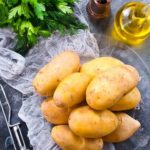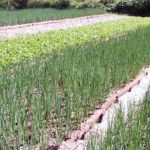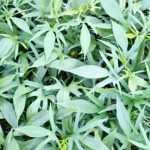Are you interested in growing your own vegetables, but not sure where to start? In this article, we will provide you with free vegetable gardening tips to help you get started on your journey to a successful vegetable garden. From choosing the right location and preparing the soil, to planting, watering, and managing pests, we’ve got you covered with all the essential information you need to cultivate a thriving garden.
Vegetable gardening is a rewarding and fulfilling activity that allows you to enjoy fresh and nutritious produce right from your backyard. Whether you are new to gardening or have some experience, these tips will provide valuable insights to help you achieve success in growing your own vegetables. With the right knowledge and techniques, anyone can create a flourishing vegetable garden regardless of their level of expertise.
In this section, we will introduce you to the basics of vegetable gardening, including essential considerations for beginners and experienced gardeners alike. We will cover everything from selecting the best location for your garden to preparing the soil and selecting the right vegetables for your climate and space. By following these tips, you’ll be well on your way to enjoying a bountiful harvest of fresh, homegrown vegetables. And the best part? These tips are absolutely free.
Choosing the Right Location for Your Vegetable Garden
When it comes to starting your own vegetable garden, one of the most important decisions you’ll make is choosing the right location for it. The success of your garden will largely depend on this crucial step, so it’s important to carefully consider several factors when selecting a spot for your vegetable patch.
Sunlight and Shade
One of the first things to consider when choosing a location for your vegetable garden is the amount of sunlight it will receive. Most vegetables thrive in full sunlight, so it’s important to select an area that gets at least 6-8 hours of direct sunlight each day. Avoid placing your garden in areas that are heavily shaded by trees or buildings, as this can hinder plant growth and reduce yields.
Soil Quality and Drainage
The quality of the soil in your chosen location is another crucial factor to consider. Vegetables generally prefer well-draining soil that is rich in organic matter and nutrients. Conduct a soil test to determine the pH level and nutrient content of the soil in your selected area. You can also improve soil quality by adding compost, aged manure, or other organic matter to enrich the soil and promote better drainage.
Proximity to Water Source
Finally, consider the proximity of your chosen location to a water source. Vegetables require regular watering, especially during dry periods, so it’s important to have easy access to water for irrigation. If possible, choose a location that is close to a water hose or irrigation system to make watering more convenient.
By carefully considering these factors when choosing the right location for your vegetable garden, you can set yourself up for success and ensure a bountiful harvest. For more free vegetable gardening tips on selecting the perfect location for your garden and other useful information on starting and maintaining a productive vegetable patch, be sure to check out additional resources available online.
Soil Preparation and Fertilization Techniques
When it comes to vegetable gardening, proper soil preparation and fertilization are crucial for the success of your garden. Before planting, it’s important to test the soil to determine its pH level and nutrient content. This will help you identify any deficiencies and make informed decisions about which type of fertilizer to use.
One popular method for improving soil quality is composting. Compost not only adds essential nutrients to the soil but also improves its structure, drainage, and moisture retention. You can create your own compost pile using kitchen scraps, yard waste, and other organic materials. This is a cost-effective way to enrich your garden soil without having to purchase commercial fertilizers.
In addition to compost, organic fertilizers such as fish emulsion, bone meal, and blood meal can be used to provide a steady supply of nutrients to your vegetables. These natural fertilizers are preferable over synthetic ones as they promote healthy soil biology and reduce the risk of chemical buildup. When applying fertilizers, be sure to follow the recommended dosage on the label to avoid over-fertilization, which can harm plants and contribute to groundwater pollution.
| Soil Preparation | Fertilization Techniques |
|---|---|
| Test the soil pH level before planting | Create a compost pile using organic materials |
| Determine nutrient content of the soil | Use natural fertilizers like fish emulsion and bone meal |
| Add compost to improve soil structure and moisture retention | Follow recommended dosage when applying fertilizers |
Selection of Vegetables for Your Garden
When it comes to selecting the right vegetables for your garden, there are several factors to consider. You’ll want to choose vegetables that are well-suited for your climate and growing conditions, as well as ones that you and your family enjoy eating. Here are some tips for choosing the best vegetables for your garden:
- Consider Your Climate: Different vegetables thrive in different climates, so it’s important to choose varieties that are well-suited for your specific growing conditions. For example, if you live in a colder climate, you may want to choose cold-weather crops like broccoli, carrots, and lettuce.
- Choose Vegetables You Enjoy: There’s no point in growing vegetables that you or your family don’t like to eat. Focus on growing vegetables that you enjoy cooking with and eating, whether it’s tomatoes, peppers, cucumbers, or herbs.
- Assess Your Garden Space: Take into account the size of your garden and how much space each vegetable will need to grow. Some vegetables, like squash and pumpkins, require a lot of space to spread out, while others, like radishes and lettuce, can be grown in smaller areas.
By taking these factors into consideration when choosing which vegetables to plant in your garden, you can increase the likelihood of a successful harvest.
In addition to considering climate and personal preference when selecting vegetables for your garden, it’s also important to think about the timing of planting. Some vegetables are best planted at certain times of the year based on the local climate. It is also essential to rotate crops from one growing season to the nextto give soil nutrients time recover from previous planting cycles.
Remember that proper planning is fundamental when deciding what type of vegetables you want to grow. Take full advantage of free vegetable gardening tips available online or at local gardening centers which often offer valuable advice for anyone interested in starting their very own vegetable garden.
Planting and Seed Starting Tips
When it comes to starting your vegetable garden from seeds, there are a few key tips to keep in mind for successful planting and healthy seedling growth. Here are some essential planting and seed starting tips to help you get the most out of your vegetable garden:
- Consider the timing: It’s important to plant your seeds at the right time for your specific climate and growing season. Be sure to check the recommended planting times for each vegetable you plan to grow.
- Prepare the soil: Before planting your seeds, make sure the soil is well-prepared and free of debris. Loose, well-drained soil will provide an ideal environment for seed germination and root development.
- Follow planting depths: Different types of vegetables require different planting depths, so be sure to follow the instructions on the seed packets. Planting too deep or too shallow can affect germination and overall plant health.
Properly starting your seeds can make all the difference in the success of your vegetable garden. By following these planting and seed starting tips, you can set your plants up for healthy growth and a productive harvest.
Whether you are a beginner or experienced gardener, these free vegetable gardening tips can help improve your gardening skills while giving you greater confidence in producing healthy vegetables at home.
Watering and Irrigation Methods
Importance of Proper Watering
One of the most crucial aspects of vegetable gardening is ensuring that your plants receive adequate water. Proper watering is essential for the growth and development of healthy, productive vegetables. Without sufficient moisture, plants may become stressed, wilt, or even perish. On the other hand, overwatering can lead to root rot and other issues. Finding the right balance is key to successful vegetable gardening.
Different Watering Techniques
There are several methods for watering a vegetable garden, each with its own advantages and considerations. Traditional methods include hand-watering with a hose or watering can, which allows for precise targeting of each plant’s root zone. Drip irrigation is another popular option that delivers water directly to the base of plants, minimizing evaporation and reducing weed growth. Sprinkler systems can also be effective for larger garden plots but may waste more water through evaporation.
Conserving Water in Your Garden
In addition to choosing the right watering method, it’s essential to consider water conservation in your vegetable garden. One simple way to conserve water is by applying a layer of mulch around your plants to retain soil moisture and reduce evaporation. Another strategy is to collect rainwater in barrels or other containers for use in your garden. By implementing these conservation techniques along with efficient watering methods, you can help ensure a healthy and thriving vegetable garden.
By implementing these free vegetable gardening tips for watering and irrigation, you can help ensure that your plants receive just the right amount of moisture they need to thrive without wasting valuable resources in the process.
Pest Management and Disease Prevention
When it comes to maintaining a healthy vegetable garden, pest management and disease prevention are crucial factors to consider. One of the best ways to prevent pests and diseases in your garden is by practicing good gardening habits and techniques. This includes proper soil preparation, selecting the right plants for your specific climate, and providing adequate care and maintenance for your vegetables.
One effective method for preventing pests and diseases is to practice crop rotation. This involves planting different types of vegetables in different areas of the garden each season, which can help disrupt the life cycles of pests and reduce the risk of disease. Additionally, using natural pest deterrents such as neem oil or companion planting with plants that repel certain pests can also be helpful in preventing infestations.
It’s important to regularly inspect your plants for any signs of pest damage or disease, as early detection can prevent further spread. Removing any affected leaves or plants, as well as keeping the garden free from debris, can help minimize the risk of widespread issues.
| Pest Management | Disease Prevention |
|---|---|
| Practice crop rotation | Regularly inspect plants for signs of disease |
| Use natural pest deterrents | Remove affected leaves or plants early on |
Harvesting and Maintaining Your Vegetable Garden
Once your vegetables have reached maturity, it’s time to start the harvesting process. The key to a successful harvest is knowing when each type of vegetable is ready to be picked. Some common signs that vegetables are ready for harvesting include their color (for example, ripe tomatoes should be a deep red), size, and firmness. It’s important to harvest regularly to encourage continuous production and prevent overripening.
Another crucial aspect of maintaining your vegetable garden is proper care after harvesting. Once you’ve picked your fruits and vegetables, it’s essential to store them correctly to maintain their freshness. Some vegetables can be stored in a cool, dark place, while others may require refrigeration. Additionally, routine pruning and weeding can help maintain the health and productivity of your garden even after harvesting.
In addition to proper maintenance post-harvesting, it’s important to plan for the next growing season. As part of maintaining your vegetable garden, consider crop rotation and soil amendment strategies that will support future plantings.
These proactive measures can help prevent disease and nutrient depletion while promoting healthy soil for future harvests. For more free vegetable gardening tips on maintaining your garden post-harvesting, there are various resources available online offering guidance on ongoing care for a thriving vegetable garden year-round.
Additional Resources for Free Vegetable Gardening Tips
If you’re looking to expand your knowledge and skills in vegetable gardening, there are plenty of resources available that offer free vegetable gardening tips. From online tutorials to community workshops, these resources can provide valuable information and guidance for both novice and experienced gardeners.
One great resource for free vegetable gardening tips is your local agricultural extension office. These offices are usually run by a state university or college and provide research-based information on gardening, including soil testing, pest control, and plant selection. Many extension offices also offer free workshops and seminars on various gardening topics, making them a valuable resource for gardeners looking to improve their skills.
Another excellent source of free vegetable gardening tips is online gardening forums and social media groups. These platforms allow gardeners to connect with one another, share their experiences, and ask questions. You can find a wealth of information on topics such as companion planting, organic pest control, and maximizing limited space for gardening.
Additionally, many public libraries carry a wide range of books and magazines on vegetable gardening that can be borrowed for free. These resources often cover everything from basic gardening techniques to advanced methods for increasing yields and managing pests organically.
By taking advantage of these additional resources for free vegetable gardening tips, you can continue to expand your knowledge and improve your skills as a vegetable gardener. Whether it’s through workshops, online forums, or library materials, there are plenty of opportunities to learn new techniques and best practices for successful vegetable gardening.
Conclusion and Recap of Essential Vegetable Gardening Tips
In conclusion, vegetable gardening can be a rewarding and enjoyable experience for anyone, whether you are a beginner or a seasoned gardener. By following the free vegetable gardening tips provided in this article, you can ensure a successful and bountiful harvest.
Remember, choosing the right location for your garden, preparing and fertilizing the soil properly, selecting the right vegetables to grow, and taking care of them with proper watering and pest management techniques are all crucial steps in creating a thriving vegetable garden. Additionally, make sure to take advantage of additional resources for more free vegetable gardening tips to continue expanding your knowledge and improving your gardening skills.
As you embark on your vegetable gardening journey, keep in mind that patience and perseverance are key virtues. Gardening is not just about growing vegetables; it is also about cultivating a connection with nature and enjoying the fruits of your labor. So roll up your sleeves, get your hands dirty, and may your vegetable garden be bountiful with fresh produce for many seasons to come.

If you’re looking to get into vegetable gardening, or are just looking for some tips on how to make your current garden better, then you’ve come to the right place! My name is Ethel and I have been gardening for years. In this blog, I’m going to share with you some of my best tips on how to create a successful vegetable garden.





